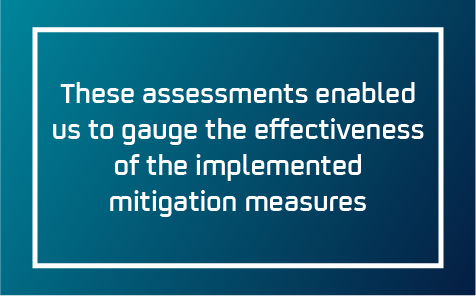Contributing to the United Nations 2030 Agenda
Contributing to the United Nations 2030 Agenda
Positively through the following SDG:

SDG 15
SDG 15
Life on land
Caipipendi Project in Bolivia
Taking into account that the Caipipendi area is an area of high sensitivity and considering that there are other actors in the area outside our Company - such as cattle ranching, agricultural projects, or the construction of departmental and national roads - we considered it essential to carry out historical monitoring studies.
These studies, which have been carried out through the interpretation of satellite images and the use of technological resources, have enabled us to clearly identify the environmental impacts associated with our Company's activities in order to properly channel and direct our prevention and mitigation actions.
They have also allowed us to discover the real effectiveness over time of the mitigation measures applied, for example, by measuring and quantifying the effectiveness of reforestation work or erosion control work. This is essential when it comes to optimizing the environmental management actions currently being carried out and directing them appropriately in the future.
In this way, our Company demonstrates its commitment to managing biodiversity from a global perspective and following best practices in accordance with international standards in its operations in the Caipipendi area of Bolivia.

Operations at Caipipendi will run until 2046, in accordance with the Law on the Promotion of Investments in Hydrocarbon Exploration and Exploitation. We are committed to the country and are investing 500 million dollars to confirm the presence of gas and accelerate hydrocarbon production in exploratory prospects that have already been identified in the area.
Contributing to the United Nations 2030 Agenda
Positively through the following SDG:

SDG 15
Life on land